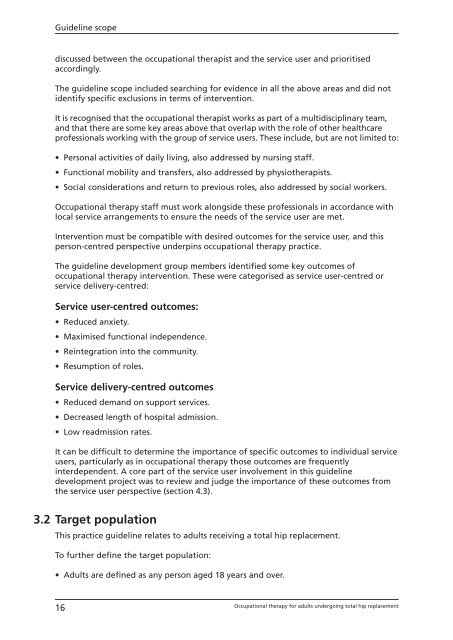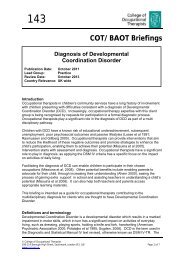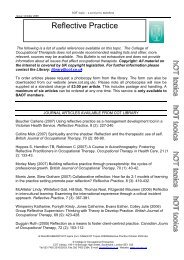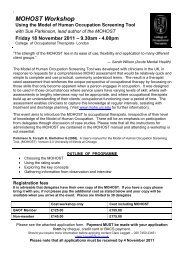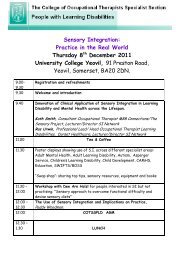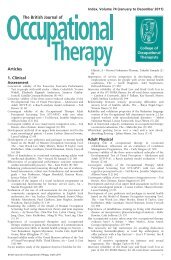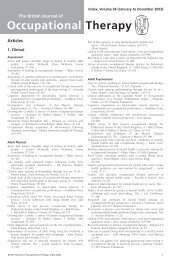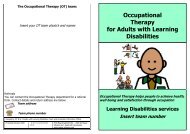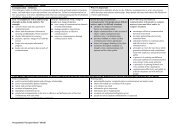Total hip replacement - College of Occupational Therapists
Total hip replacement - College of Occupational Therapists
Total hip replacement - College of Occupational Therapists
You also want an ePaper? Increase the reach of your titles
YUMPU automatically turns print PDFs into web optimized ePapers that Google loves.
Guideline scope<br />
discussed between the occupational therapist and the service user and prioritised<br />
accordingly.<br />
The guideline scope included searching for evidence in all the above areas and did not<br />
identify specific exclusions in terms <strong>of</strong> intervention.<br />
It is recognised that the occupational therapist works as part <strong>of</strong> a multidisciplinary team,<br />
and that there are some key areas above that overlap with the role <strong>of</strong> other healthcare<br />
pr<strong>of</strong>essionals working with the group <strong>of</strong> service users. These include, but are not limited to:<br />
• Personal activities <strong>of</strong> daily living, also addressed by nursing staff.<br />
• Functional mobility and transfers, also addressed by physiotherapists.<br />
• Social considerations and return to previous roles, also addressed by social workers.<br />
<strong>Occupational</strong> therapy staff must work alongside these pr<strong>of</strong>essionals in accordance with<br />
local service arrangements to ensure the needs <strong>of</strong> the service user are met.<br />
Intervention must be compatible with desired outcomes for the service user, and this<br />
person- centred perspective underpins occupational therapy practice.<br />
The guideline development group members identified some key outcomes <strong>of</strong><br />
occupational therapy intervention. These were categorised as service user- centred or<br />
service delivery- centred:<br />
Service user- centred outcomes:<br />
• Reduced anxiety.<br />
• Maximised functional independence.<br />
• Reintegration into the community.<br />
• Resumption <strong>of</strong> roles.<br />
Service delivery- centred outcomes<br />
• Reduced demand on support services.<br />
• Decreased length <strong>of</strong> hospital admission.<br />
• Low readmission rates.<br />
It can be difficult to determine the importance <strong>of</strong> specific outcomes to individual service<br />
users, particularly as in occupational therapy those outcomes are frequently<br />
interdependent. A core part <strong>of</strong> the service user involvement in this guideline<br />
development project was to review and judge the importance <strong>of</strong> these outcomes from<br />
the service user perspective (section 4.3).<br />
3.2 Target population<br />
This practice guideline relates to adults receiving a total <strong>hip</strong> <strong>replacement</strong>.<br />
To further define the target population:<br />
• Adults are defined as any person aged 18 years and over.<br />
16<br />
<strong>Occupational</strong> therapy for adults undergoing total <strong>hip</strong> <strong>replacement</strong>


